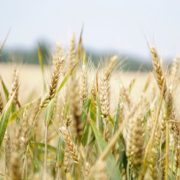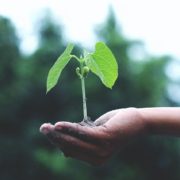Rose Farming a Blooming Business
Rose farming really is a booming business, from cut flower production to perfume extraction, harvesting hips and rose oils! This flower’s popularity for business and pleasure truly is coming up roses! So, if you want to start your own blooming business in rose farming, take a look at our Certificate of Rose Production!
Certificate of Rose Production is an online professional development course that helps you identify, propagate and grow many different types of roses for a commercial rose crop. You will discover rose species and varieties pronunciation of rose names, as well as propagation, pruning, pest control and soil management techniques.
In this rose farming course, you’ll also learn to prepare a plan for a rose garden, produce drawings to scale, about the components of a greenhouse and hydroponic system for roses to create and manage a commercial rose crop for whatever venture takes your fancy!
Learning Outcomes
Outcomes achieved by undertaking our rose farming course include:
- Distinguish between the morphology of different groups of roses.
- Compile a resource collection of contacts to assist with the identification of roses.
- Prepare a collection of photographs or illustrations of rose varieties.
- Determine how to grow roses in your locality, detailing: soil preparation, planting, fertilising, staking, and watering in
- Describe how to propagate roses, using various techniques including grafting, budding, layering and seeding
- Identify the pests and diseases afflicting rose plants.
- Differentiate between the culture and use in the garden of different types of roses, including climbers, miniatures, standards and bush roses.
- Differentiate between the culture of roses in a greenhouse and the open ground.
- Distinguish between the pruning of climbing, ramblers, bush, miniature and standard roses.
- Compare the culture and application of hybrid teas, floribundas and polyanthas in a garden or nursery.
- Determine appropriate rose varieties to be included in a proposed rose garden per given specifications.
- Prepare a plan for a rose garden, including scale drawings, plant lists, materials lists and cost estimates.
- Develop criteria for selecting rose varieties to grow as a commercial crop for a specified purpose.
- Evaluate rose flowers offered for sale.
- Determine factors critical to the production of various rose products, such as cut flower roses, rosehip syrup, rose oil, dried rose petals, nursery stock roses.
And more!
5 of The Most Fragrant Roses
If you stop to smell the roses, you’ll be interested in rose farming of the fragrant kind. Here are five of the most sweet-smelling roses around.
Mr Lincoln
A dark red, tall hybrid tea rose with an exquisite fragrance and long stems. These flowers are ideal for putting in vases and can be grown in hot Australian conditions!
Double Delight
A spicy-scented hybrid tea rose with a creamy centre and amazing smell! It grows as a bush to about 1.5 metres high, and while ideal in hot weather conditions, it doesn’t cope well with humidity.
Madame Anisette
A cream, apricot rose with an exquisite anise fragrance with hints of liquorice, spice and honey! It has large double blooms that do well in the warmer months, being easy to care for and heat resistant.
Perfume Passion
This beautiful rose has an intense fragrance of citrus, lychee and white peach! It has great form, healthy foliage and is ideal for picking.
Rosa Boscobel
This large, salmon-pink rose has a strong myrrh fragrance with hints of elderflower, pear and almond! It’s a busy shrub rose that flowers throughout summer.
25 Blooming Amazing Facts About Roses
Here are some fun facts about roses that you may not know … and a little inspiration for rose farming!
- Roses are relatively easy to grow – just plant them in a sunny spot and water them to keep the soil moist!
- The rose is associated with the Greek god Aphrodite – the goddess of love!
- There are over three hundred species of roses and tens of thousands of cultivated or hybrid roses!
- Roses don’t grow as a single flower–different species include shrubs, climbers, trailers and groundcovers.
- Wild roses only bloom once a year and are naturally pollinated by insects
- Most rose species are native to Asia
- Roses come in every colour of the rainbow – red, yellow, pink, orange, white and blue!
- The flowers of most roses have five petals
- A typical rose can live up to 35 years
- Rose petals are edible – they can be eaten raw, dried or soaked to make rose water
- Roses grow small, berry-like fruit called rosehip, which can be red, orange, purple and black
- Rose syrup is made by adding sugar to rose water
- Many roses are used in herbal and Chinese medicine
- You can make a rainbow rose by taking a white rose and splitting the stem into different bowls of dyed, coloured water. The rose absorbs the water, and it dyes the flower petals different colours.
- Most roses are deciduous – they shed their petals after flowering
- It takes 2000 roses to extract just one gram of rose oil used in perfume!
- Roses are one of the oldest flowers, dating back 35 million years
- A rose breeder spent 15 years breeding a rare rose named ‘Juliet’, which sold for $15.8 million!
- There’s no such thing as a black rose – they may look black in some gardens, but they’re actually very dark red.
- The tallest ever recorded rose bush stands over seven metres tall!
- Rose colours have different meanings. Red – love, Yellow – friendship …
- Roses and Rosehips are full of vitamin C
- Yellow roses have come to symbolise friendship and caring, but historically they represented jealousy
- There is a Rose Hall of Fame, which contains world-famous roses. The World Federation of Rose Societies votes the roses into the Hall of Fame.
- In 1998, a rose named Overnight Sensation was sent to outer space!
Gain a comprehensive understanding of all aspects of rose farming with our online course, the Certificate of Rose Production.










